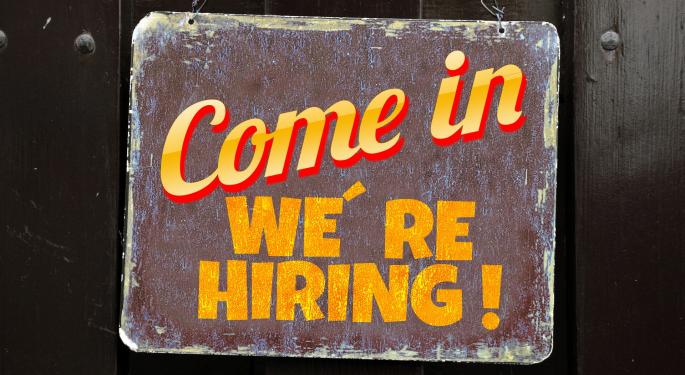Why The Tight US Labor Market May Be Here To Stay
In a series of blog posts last week, Commonwealth Financial Network chief investment officer Brad McMillan discussed just what’s going on with labor shortages in the U.S. economy.
The $300-per-week emergency federal unemployment supplement has taken a lot of the blame for the lack of available workers, but McMillan said there is a much larger and longer-term trend in play.
OK, Boomers: McMillan said there were more job openings than workers to fill them in the U.S. economy even prior to the pandemic. A long-term graph of the number of job openings subtracted from the number of unemployed Americans reveals the number of surplus jobs has been trending lower ever since the financial crisis in 2008 and dipped into negative territory back in 2018.

Related Link: Why The Infrastructure Bill Could Be Bad News For The Stock Market
One of the primary reasons for this longer-term trend is the retirement of the baby boomer generation, McMillan said. In fact, the pandemic forced a number of boomers into early retirement since the beginning of 2020.
“After the initial pandemic layoffs, the number of people not working because they were laid off, in one form or another, steadily declined as individuals moved back into the workforce. The number of people not working due to retirement spiked, as older people who were laid off opted to remain out of the workforce,” McMillan wrote.
Shock Or Trend? McMillan estimated there are about 1.2 million Americans retired today that wouldn’t have been retired were it not for the pandemic. That massive retirement wave was somewhat of a one-time shock to the economy, but the number of people out of the labor force has stabilized in the past year.
At the same time, the long-term trend of people moving out and staying out of the labor force is likely to continue in years ahead, McMillan said. If the percentage of Americans not in the labor force who are actually seeking jobs continues to fall, the economy could continue to see upward pressures on wages in the years ahead.
“We won’t see another series of shocks, such as those that occurred during the pandemic, but we won’t go back to the normal of past decades either,” he wrote. “The labor market is in the middle of a shift from a surplus of workers to a potential shortage.”
Benzinga’s Take: If the current labor shortage is largely part of a long-term demographic trend toward an increasing surplus of jobs, it could have significant implications on wages, inflation, interest rates and other key economic metrics. Rising wages, inflation and interest rates could also be bad news for corporate earnings and the SPDR S&P 500 ETF Trust (NYSE: SPY).
© 2025 Benzinga.com. Benzinga does not provide investment advice. All rights reserved.
Posted-In: Brad mcMillan Commonwealth Financial NetworkAnalyst Color News Econ #s Top Stories Economics Best of Benzinga



